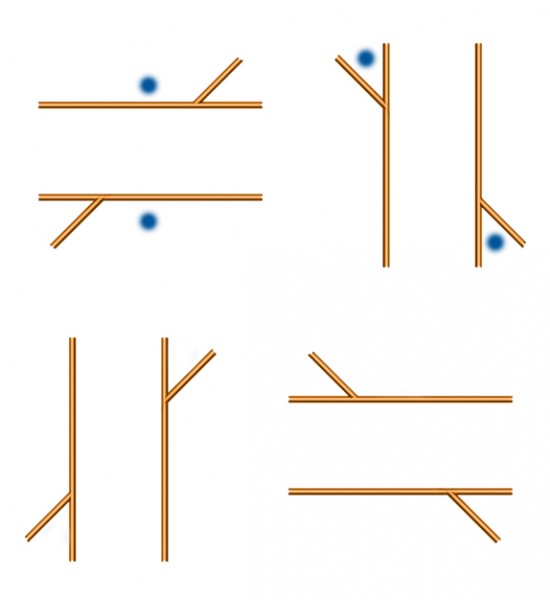If the way I see this animation is how most people do, the strength of the Poggendorff illusion can depend on our patterns of fixation when looking at it. Adding distracting dots to the figure can attract the eye either obliquely along the parallels or at right angles across them. To my eye, when the oblique track between the acute angles in the figure is labelled with flashing blobs, the strength of the illusion is reduced. When the track at right angles across the parallels is labelled, effect is maximised. The effect doesn’t change instantly for me, but settles down after each track has flashed two or three times. I get the same effect if I switch fixations every second or so between equivalent blobs in still Poggendorff figures. The effect is strongest, as below, when the blobs are in the acute angles when the parallels are vertical, and across parallels when the parallels are horizontal. So in the figure below, the illusion is not far off equal strength for me in the bottom pair of figures, but looks maybe a bit stronger at top left, and has almost vanished at top right.
If you’d like more on this, plus some additional demos, check out my site devoted to the Poggendorff illusion.

